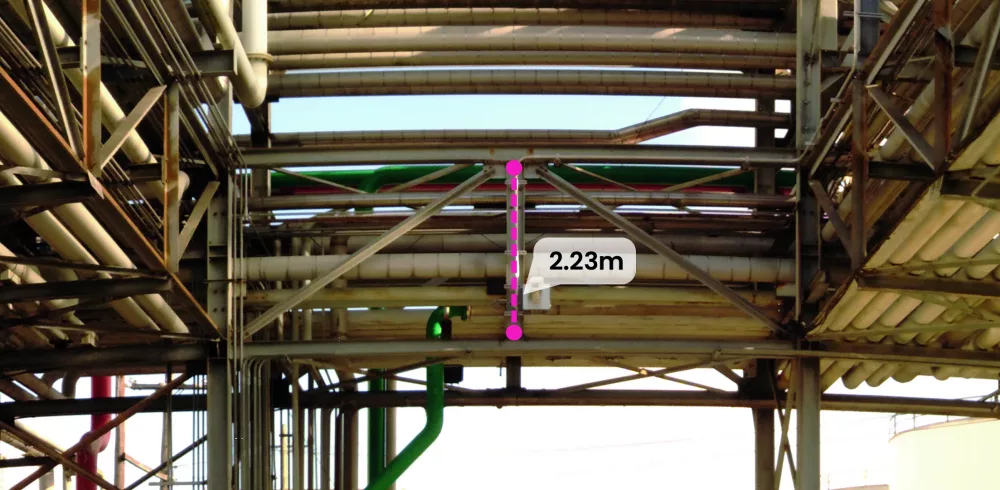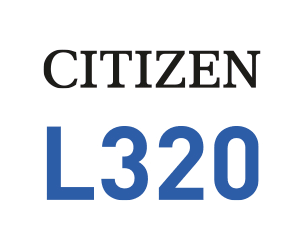A3D’s new virtual site tours (VST) will allow terminal personnel to walk their site whether it be from their home / work station..
COVID has for many of us, forced changes in our work patterns including that of working from home. To facilitate this, company IT departments have softened their attitudes towards cloud computing methods to facilitate home working. However, for both managers and engineers employed on process installations, maintaining access to their operating areas during COVID pandemic has been restricted.
Our established clients have seen the benefit from having had A3D complete the 3D laser scanning of their sites where staff now working from home can use the scan data to continue visiting sites without necessarily stepping foot on site. The A3D solution allowing staff to walk, measure and inspect site without leaving their home desk. Furthermore, one of our major clients has quantified by around 40%, the saving in site visits from using A3D recorded 3D laser scan data.
The site in question was in the Netherlands where A3D completed a full site survey using 3D laser scanners. The site area was approximately 170,000 m2, containing 90 storage tanks, multiple rail and road loading facilities and jetties. The original purpose for 3D laser scanning being to prepare accurate asset tagged 3D process models of their site. A3D who specialize in the process industry, can expertly interrogate recorded 3D laser scan data in identifying site assets in creating our 3D process models for linking with client asset, maintenance, and document management systems.
Beyond the original project, A3D made available a cloud-based application allowing client to walk their site using the individual scan positions. A year down the line, the client has seen significant changes in traditional site practices whereby the terminal staff now prefer using the freely available software to accomplish their site visits stating key benefits / savings as: –
- Reduction in work permits, reducing demand on operating staff
- Reduction in PPE usage necessary to complete the site visits
- More efficient use of engineers / technician’s time
- Reduced demand for operator escorts for site visitors
- Reduced incidents, normally resulting from slips and trips being reported
With the changes in work practices being adopted, the client has requested A3D prepare short videos using the recorded 3D laser scan data, for both site training and in assisting with identification of assets, particularly important where work permits were being prepared for site contractors.
With a strong engineering background, A3D could foresee these benefits but now our clients are realizing the benefits and adapting site work practices to take full advantage of 3D laser scan data recorded by A3D. COVID having forced operators of process installations to rethink work practices, are now embracing this exciting technology.
Why not allow A3D to introduce the benefits of our 3D technologies to you?
Developed around a strong focus on clients’ operational needs, the engineers of A3D embarked on a journey eight years ago using 3D laser scan data to design a range of applications specifically tailored to operators of process installations. The firm’s successful business model has now resulted in a range of competitively priced, well-designed applications to assist clients. Whatever the size of your manufacturing, storage or refining facility, A3D’s engineered products enable operational efficiencies in the operation, maintenance, documentation and asset management of your valuable facility.
Likely your facility has already established an asset management system, likely driven by the financial needs and not necessarily the needs of the company’s engineers and operators. A3D’s 4D Lizard software is designed to provide the important link between the field assets and the asset management system. In creating your digital twin, A3D intelligent process models, and piping and instrumentation diagrams (P&IDs), are database-driven. The database contains vital asset information that can, via an established application programming interface (API) link, offer the upload and download of data to and from your asset management system.
For the simple piece of process plant pictured, A3D highlights samples of information that it can derive from both 3D laser scan data and a selection of the deliverables that can be processed from the scan data. Along with existing site documentation, all can be uploaded using the company’s 4D Lizard software and compiled for use by the client either via their asset management system or directly via 4D Lizard. The overriding message being, whatever your operation challenges, A3D, with its engineering background, has solutions to meet your asset, maintenance and document management needs. For this article let us consider P&IDs and in particular, the use of 3D laser scan data to prepare these files for a large storage terminal in Deer Park, Texas.
CASE STUDY – PREPARATION OF P&IDS
A3D was requested to apply its specialist services to prepare some 650 P&IDs. Unlike simple CAD files, these were to be built using the Autodesk Smart P&ID software. This was because, like A3D’s Smart Autodesk Plant 3D models, the P&ID files will carry in the background all asset information in the file database essential for the intended project, to link with the client’s enterprise asset management (EAM) system.
Previously A3D’s client had used traditional methods to validate field data. However, this traditional method was resulting in a programme expected to take several years to complete. Using its specialised process surveyors, A3D was able to reduce the time taken by traditional methods to a few months. The speed at which site information can be collected meant that the cost per P&ID is competitive with that charged using traditional surveying methods, with the added advantage that the client also has measurable data for the site for which further A3D deliverables, such as process models, could be exploited.
VITAL PLANT INFORMATION
Forming an essential part of the design process, P&IDs represent the culmination of a process that may well start with a process engineer’s simple sketch. From a combination of process flow sheets, mechanical process equipment design, electrical and instrumentation input, the resulting P&IDs will form the basis for decisions made by the design team. This includes development of control system operations, where further safety and operability studies continue to ensure safe operation of the commissioned process.
Why then are P&IDs often neglected once a process is commissioned and operating? With over 40 years’ experience in the process industries, A3D often discovers that a client’s P&IDs have not been revisited and updated. Further investigation often establishes that both operational changes and new capital initiatives have taken place without a ‘management of change’ that would otherwise necessitate the revision of these once essential documents. Lack of skilled resources, financial pressures, or simply a lack of understanding, all contribute to P&IDs falling into disregard. Only after the advent of an incident on site are P&IDs then called upon, as part of the investigatory process with safety authorities.
Calling on process industries experience in preparing and updating P&IDs, A3D took a fresh look at the challenge clients currently face in maintaining documentation including P&IDs and how its 3D laser technologies would achieve this in a cost effect way. Since traditional skilled P&ID surveyors, and indeed any engineering skilled surveyors, are in short supply, A3D now captures the site process detail using 3D laser scanners using a combination of both the high-resolution images and raw scan data to identify field asset details.
P&IDS FOR STORAGE TERMINALS
For storage terminals, A3D has considered the typical assets that are to be found, such as tanks, pumps, hose exchangers/manifolds, loading facilities, ship/barge berths and utility systems. Within these asset categories A3D prepares standard Autodesk Smart template files capturing a typical asset arrangement along with its connecting services.
For instance, within a storage terminal, storage tanks sharing a common pit or bund will likely have been built by the same tank fabricator. Therefore, a tank template can be prepared from which subsequent tank P&IDs can be prepared by interrogation of recorded 3D laser scan data.
Working alongside clients, A3D is perfecting an industry-leading technique to use captured 3D laser scan data as a basis for preparing first field assets, presented as process flow diagrams (PFDs) before completed field validations working with your terminal team to develop PFDs into P&IDs that will include your terminal control detail. The company’s corporate strategy is to utilise, wherever possible, companies local to clients’ individual terminals to complete the recording of 3D laser scan data and then to complete site validations to deliver a cost-effective solution.
Manufacturing & Engineering Magazine | The Home of Manufacturing Industry News
















